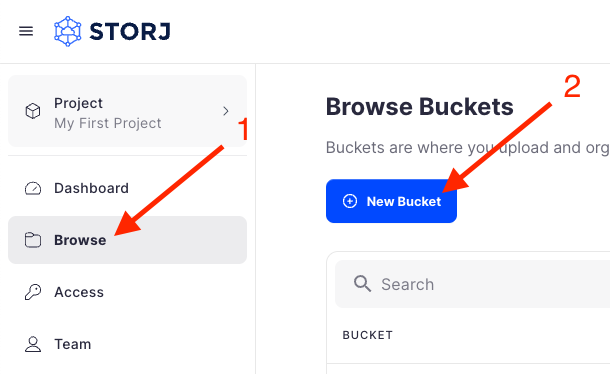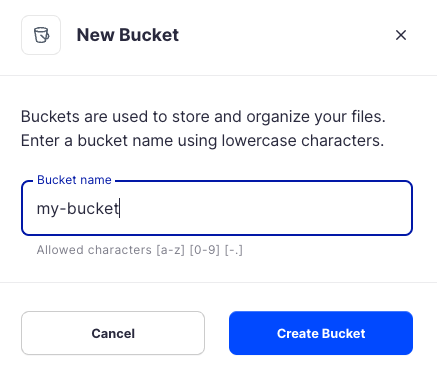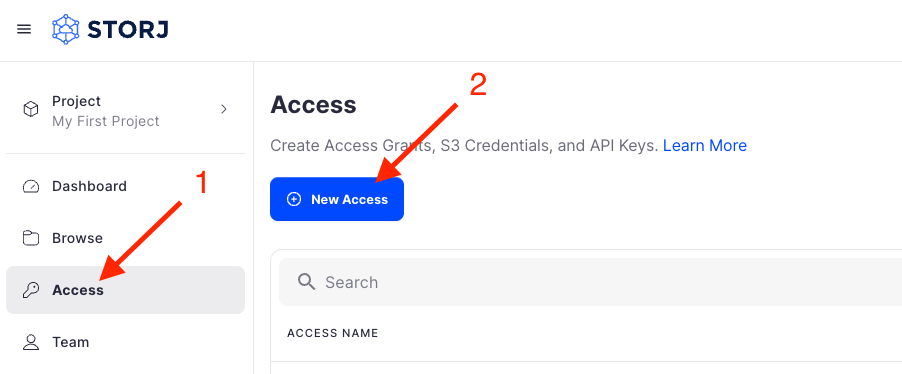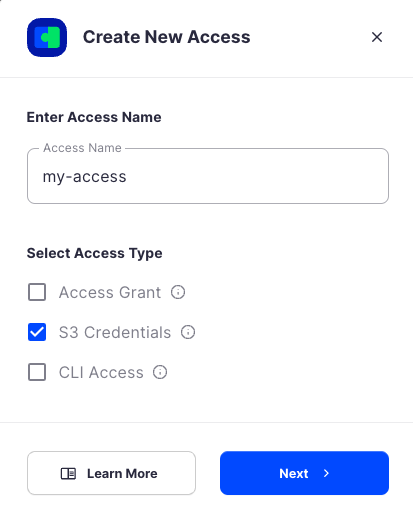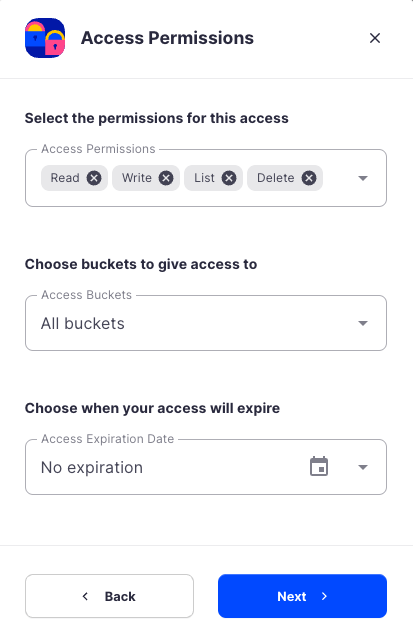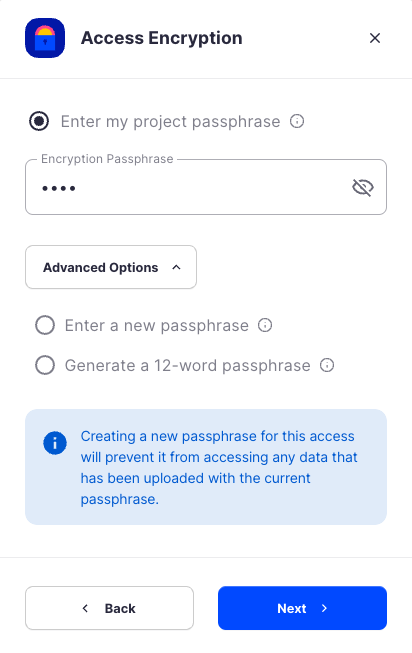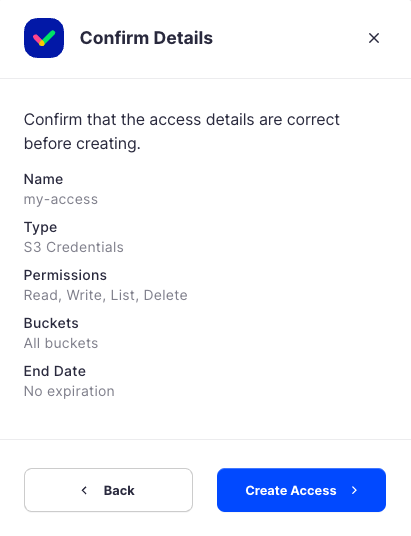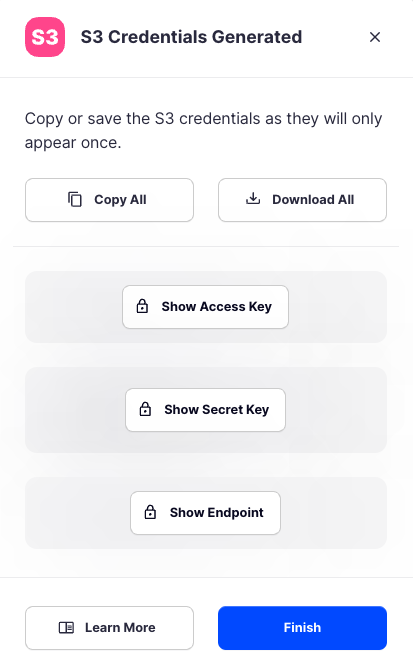Bacula
Integration
To integrate Storj with Bacula, you will need to create S3 credentials in Storj and add them within Bacula.
Requirements
- An active Storj account
- A bucket for use with Bacula in your Storj instance
- Bacula Enterprise Edition
- Installed Bacula Cloud S3 plugin
Bacula Enterprise Edition offers a 30-day trial for new users.
Create an Account
To begin, you will need to create a Storj account.
Navigate to https://www.storj.io/signup?partner=bacula to sign up, or log in https://storj.io/login if you already have an account.
Create a Bucket
Once you have your Storj account you can create a bucket for your data to be stored in.
Navigate to Buckets on the left side menu.
Click New Bucket on the top right.
Assign the bucket an easily identifiable name, such as "my-bucket".
Click Create bucket
Generate S3 credentials
Storj has an Amazon S3 compatible API and you'll need generate S3 credentials to use it. S3 credentials consist of an access key, secret key, and endpoint.
Create S3 credentials in the Storj console:
Navigate to Access on the left side menu.
Click Create S3 Credentials under the S3 Credentials block.
When the Create Access screen comes up, set specifications according to the following guidelines:
- Type: S3 Credentials
- Name: The name of the credentials (e.g. my-access)
Click Continue to provide permissions
- Permissions: All
- Buckets: Feel free to specify the bucket you created above (e.g. my-bucket), or leave as “All”
- End date: provide an expiration date for these credentials (optional)
Click Continue to provide Access encryption Information
In order to see the data uploaded to your bucket in the Storj console, you must unlock the bucket with the same encryption passphrase as the credentials.
- Use the current passphrase: this is default option
- Advanced: you may provide a different encryption phrase either your own or generate a new one.
- Enter a new passphrase: use this option, if you would like to provide your own new encryption phrase
- Generate 12-word passphrase: use this option, if you would like to generate a new encryption phrase
Click Create Access to finish creation of your S3 credentials
Click Confirm the Confirm details pop-up message
Your S3 credentials are created. Write them down and store them, or click the Download all button. You will need these credentials for the following steps.
Connecting Bacula to Storj
Log into Bweb Management Console (https://IP-of-server:9180)
On the left hand navigation, click Storage and Media then Add New Storage
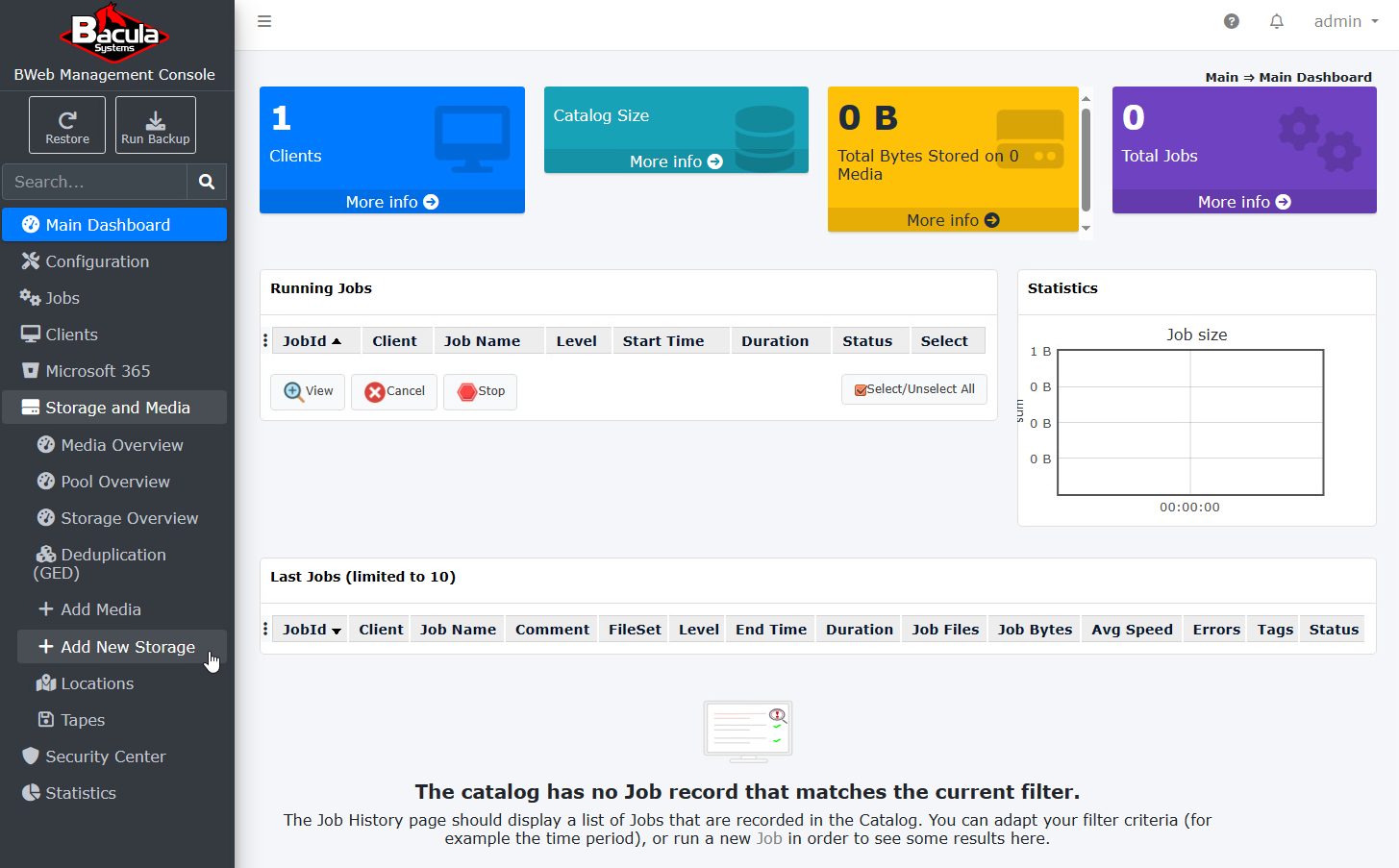
From the radio buttons, choose Select a Storage Dameon.... Then, in the Device Type dropdown, select Cloud Virtual Disk Changer. Click Next.
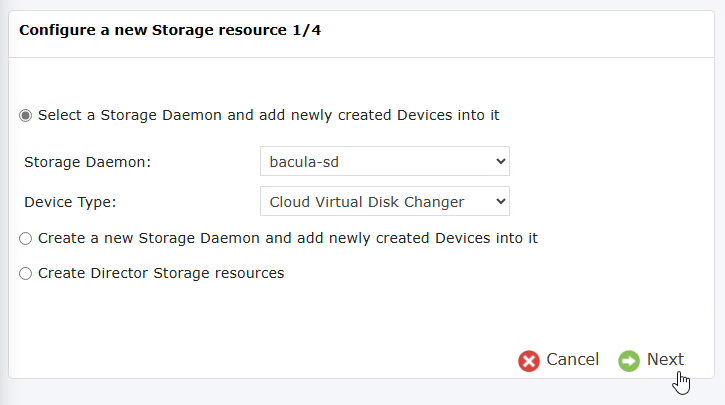
On the Copy from existing Storage dropdown, select DiskAutoChanger. The remaining fields automatically populate with information. Click Next.
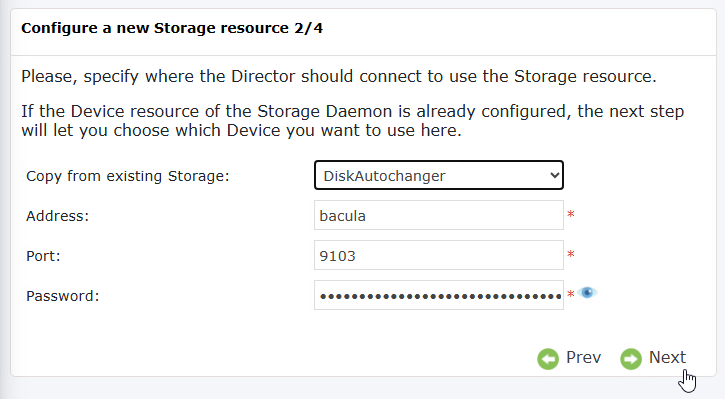
Type "storj" or a custom name for Media Type. Then enter values under Configure your Cloud resource.
- Driver : "S3"
- Hostname : "gateway.storjshare.io"
- Access Key : The Access Key ID you generated in Storj
- Secret Key : The Secret Access Key you generated in Storj
- Region : Click the paper/pencil button to type in any custom region name
- Bucket Name: The name of the bucket you created in Storj
Click the circle-arrow button to test the connectivity, it will turn green if successful. Then click Next.
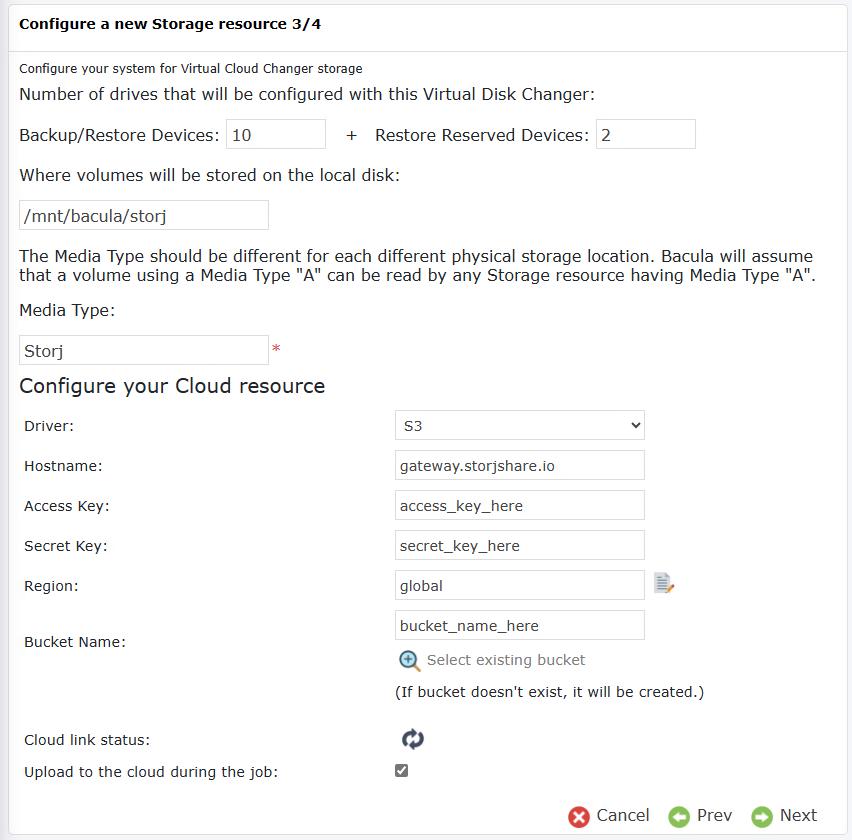
Give this storage resource a name, then hit Save.
If Autocommit is not enabled in your BWeb console, you will be displayed what changes will be committed to the Storage Director once you hit Commit.
The Storage Daemon must be restarted in order to see the newly created S3 target. From the CLI of the Bacula server, type:
